District: Marysville
System: Marysville
A printable version of this report is also available.
Welcome
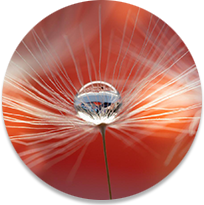 Since 1926, Cal Water has been committed to providing safe, reliable, high-quality water to our customers and communities. When the coronavirus pandemic began in 2020, access to clean water became particularly top of mind. During these difficult times, our commitment to our customers remained as strong as ever.
Since 1926, Cal Water has been committed to providing safe, reliable, high-quality water to our customers and communities. When the coronavirus pandemic began in 2020, access to clean water became particularly top of mind. During these difficult times, our commitment to our customers remained as strong as ever.
In this system in 2020, we conducted 7,203 tests on 600 water samples for 164 constituents. We are pleased to confirm that we met every primary and secondary federal and state water quality standard last year.
Our promise to provide quality, service, and value means more than just treatment and testing. It means having expert professionals available to assist with routine services in a safe and efficient manner. It means having personnel available to handle emergencies 24 hours per day. It means maintaining and upgrading the infrastructure needed to transport water through a network of pumps, tanks, and pipes to your tap. It also means that, even with costs increasing across the country, we do everything we can to operate as efficiently as possible to keep your water affordable.
I encourage you to review this annual water quality report, also called your Consumer Confidence Report, as it details any constituents detected in your water supply in 2020 and shows how your water compares to federal and state standards. It also provides information on current water quality issues and steps we are taking to protect your health and safety.
If you have any questions, we are here to assist you. You can reach us by phone or email at our local Customer Center, or online at www.calwater.com. You can also get water service news on our web site, via our Facebook, Twitter, and Instagram pages, and in your monthly bill. And, please be sure your contact information with Cal Water is up to date by visiting ccu.calwater.com, to ensure we can reach you with important emergency and other information.
Sincerely,
Evan Markey, District Manager, Marysville District
[Marysville District | 131 D Street | Marysville, CA 95901 | (530) 742-6911]
Contact Us
If you have any questions, suggestions, or concerns, please contact our local Customer Center, either by phone at (530) 742-6911 or through the Contact Us page.
Your Water System
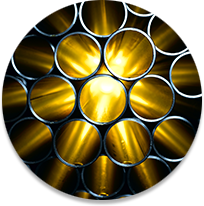 Cal Water has provided high-quality water utility services in Marysville since 1930. To meet the needs of our customers, we utilize eight wells to pump up to three million gallons of groundwater per day, which are delivered using 55 miles of pipeline, two storage tanks, and three booster pumps.
Cal Water has provided high-quality water utility services in Marysville since 1930. To meet the needs of our customers, we utilize eight wells to pump up to three million gallons of groundwater per day, which are delivered using 55 miles of pipeline, two storage tanks, and three booster pumps.
Our company-wide water quality assurance program includes vigilant monitoring throughout our systems and testing at our state-of-the-art laboratory. Additionally, we proactively maintain and upgrade our facilities to ensure a reliable, high-quality supply.
Water Resource Sustainability
Cal Water helps our customers conserve water by offering programs and incentives to reduce indoor and outdoor water use, develop more efficient habits, and educate the next generation about the importance of managing water resources sustainably. We also continue to invest diligently in our infrastructure to reduce the amount of water lost to pipeline leaks and are updating our assessment of the impacts of climate change on water supply and demand. As we await more information on the long-term water-use regulations from the State of California, it's important that we make water-use efficiency a way of life. Using water wisely will ensure that we have enough water in dry years and for generations to come.
Visit www.calwater.com/conservation for details.
Water Quality
The Water Quality Lab
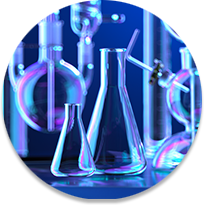 Water professionals collect samples from throughout the water system for testing at our state-of-the-art water quality laboratory, which is certified each year through the stringent Environmental Laboratory Accreditation Program (ELAP). Scientists, chemists, and microbiologists test the water for 326 constituents with equipment so sensitive it can detect levels as low as one part per trillion. In order to maintain the ELAP certification, all of our scientists must pass blind-study proficiency tests for every water quality test performed. Water quality test results are entered into our Laboratory Information Management System (LIMS), a sophisticated software program that enables us to react quickly to changes in water quality and analyze water quality trends in order to plan effectively for future needs.
Water professionals collect samples from throughout the water system for testing at our state-of-the-art water quality laboratory, which is certified each year through the stringent Environmental Laboratory Accreditation Program (ELAP). Scientists, chemists, and microbiologists test the water for 326 constituents with equipment so sensitive it can detect levels as low as one part per trillion. In order to maintain the ELAP certification, all of our scientists must pass blind-study proficiency tests for every water quality test performed. Water quality test results are entered into our Laboratory Information Management System (LIMS), a sophisticated software program that enables us to react quickly to changes in water quality and analyze water quality trends in order to plan effectively for future needs.
Cross-Connection Control
To ensure that the high-quality water we deliver is not compromised in the distribution system, Cal Water has a robust cross-connection control program in place. Cross-connection control is critical to ensuring that activities on customers' properties do not affect the public water supply. Our cross-connection control specialists ensure that all of the existing backflow prevention assemblies are tested annually, assess all connections, and enforce and manage the installation of new commercial and residential assemblies.
Backflow can occur when certain pressure conditions exist either in our distribution system or within the customer's plumbing, so our customers are our first line of defense. A minor home improvement project—without the proper protections—can create a potentially hazardous situation, so careful adherence to plumbing codes and standards will ensure the community's water supply remains safe. Please be sure to utilize the advice or services of a qualified plumbing professional.
Many water-use activities involve substances that, if allowed to enter the distribution system, would be aesthetically displeasing or could even present health concerns. Some common cross-connections are:
- Garden hoses connected to a hose bib without a simple hose-type vacuum breaker (available at a home improvement store)
- Improperly installed toilet tank fill valves that do not have the required air gap between the valve or refill tube
- Landscape irrigation systems that do not have the proper backflow prevention assembly installed on the supply line
The list of materials that could potentially contaminate the water system is vast. According to the EPA, a wide variety of substances have contaminated drinking water systems throughout the country as a result of poor cross-connection control. Examples include:
- Antifreeze from a heating system
- Lawn chemicals from a garden hose or sprinkler head
- Blue water from a toilet tank
- Carbonated water from a soda dispenser
Customers must ensure that all plumbing is in conformance with local plumbing codes. Additionally, state law requires certain types of facilities to install and maintain backflow prevention assemblies at the water meter. Cal Water's cross-connection control staff will determine whether you need to install a backflow prevention assembly based on water uses at your location.
DWSAPP
By the end of 2002, Cal Water had submitted to the Division of Drinking Water (DDW) a Drinking Water Source Assessment and Protection Program (DWSAPP) report for each water source in the water system. The DWSAPP report identifies possible sources of contamination to aid in prioritizing cleanup and pollution prevention efforts. All reports are available for viewing or copying at our Customer Center.
The water sources in your district are considered most vulnerable to:
- Existing and historic gas stations
- Injection wells
- Known contaminant plumes
- Underground storage tanks
- Chemical/petroleum industries
- Dry cleaners
- Metal plating/fabrication
- Wastewater
- Landfills/dumps
A copy of this assessment may be viewed at:
DDW Valley District Office
364 Knollcrest Drive
Redding, CA 96002
We encourage customers to join us in our efforts to prevent water pollution and protect our most precious natural resource.
2020 Results
Fluoride
State law requires Cal Water to add fluoride to drinking water if public funding is available to pay for it, and it is a practice endorsed by the American Medical Association and the American Dental Association to prevent tooth decay. In this area, low levels of fluoride occur naturally, and Cal Water doesn't add any to the water supply. Show the table in this report to your dentist to see if he or she recommends giving your children fluoride supplements.
More information about fluoridation, oral health, and related issues can be found on the DDW web site at www.waterboards.ca.gov/drinking_water/certlic/drinkingwater/Fluoridation.html. For general information on water fluoridation, visit us online at www.calwater.com.
Water Hardness
Hardness is a measure of the magnesium, calcium, and carbonate minerals in the water. Water is considered soft if its hardness is less than 75 parts per million (ppm), moderately hard at 75 to 150 ppm, hard between 150 and 300 ppm, and very hard at 300 ppm or higher.
Hard water is generally not a health concern, but it can have an impact on how well soap lathers and is significant for some industrial and manufacturing processes. Hard water may also lead to mineral buildup in pipes or water heaters.
Some people with hard water opt to buy a water softener for aesthetic reasons; however, some water softeners add salt to the water, which can cause problems at wastewater treatment plants. Additionally, people on low-sodium diets should be aware that some water softeners increase the sodium content of the water.
For more information on water hardness, visit www.calwater.com/video/hardness.
The current water quality table for your service area shows an average hardness of 175 ppm.
Possible Contaminants
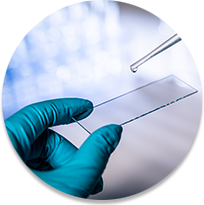 All drinking water, including bottled water, may reasonably be expected to contain at least small amounts of some contaminants. The presence of contaminants does not necessarily indicate that water poses a health risk.
All drinking water, including bottled water, may reasonably be expected to contain at least small amounts of some contaminants. The presence of contaminants does not necessarily indicate that water poses a health risk.
More information about contaminants and potential health effects can be obtained by calling the United States Environmental Protection Agency (EPA) Safe Drinking Water Hotline at (800) 426-4791.
The sources of drinking water (both tap and bottled) include rivers, lakes, streams, ponds, reservoirs, springs, and wells. As water travels over the surface of the land or through the ground, it dissolves naturally occurring minerals and, in some cases, radioactive material, and can pick up substances resulting from the presence of animals or human activity.
Contaminants that may be present in source water include:
Microbial contaminants, such as viruses and bacteria, which may come from sewage treatment plants, septic systems, agricultural livestock operations, and wildlife.
Inorganic contaminants, such as salts and metals, which can be naturally occurring or result from urban stormwater runoff, industrial or domestic wastewater discharges, oil and gas production, mining, or farming.
Pesticides and herbicides, which may come from a variety of sources such as agriculture, urban stormwater runoff, and residential uses.
Organic chemical contaminants, including synthetic and volatile organic chemicals, which are byproducts of industrial processes and petroleum production, and can also come from gas stations, urban stormwater runoff, agricultural application, and septic systems.
Radioactive contaminants, which can be naturally occurring or the result of oil and gas production and mining activities.
In order to ensure that tap water is safe to drink, the EPA and DDW prescribe regulations that limit the amount of certain contaminants in water provided by public water systems. FDA regulations establish limits for contaminants in bottled water, which must provide the same protection for public health.
Some people may be more vulnerable to contaminants in drinking water than the general population. Immunocompromised people, such as those with cancer undergoing chemotherapy, those who have undergone organ transplants, and those with HIV/AIDS or other immune system disorders; some elderly people; and infants can be particularly at risk from infections. These people should seek advice from their health care providers about drinking water. EPA and Centers for Disease Control and Prevention (CDC) guidelines on appropriate means to lessen the risk of infection by cryptosporidium and other microbial contaminants are available from the Safe Drinking Water Hotline.
About Lead
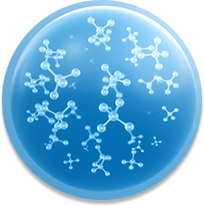 As the issue of lead in water continues to be top of mind for many Americans, Cal Water wants to assure you about the quality of your water. We are compliant with health and safety codes mandating use of lead-free materials in water system replacements, repairs, and new installations. We have no known lead service lines in our systems. We test and treat (if necessary) water sources to ensure that the water delivered to customer meters meets all water quality standards and is not corrosive toward plumbing materials.
As the issue of lead in water continues to be top of mind for many Americans, Cal Water wants to assure you about the quality of your water. We are compliant with health and safety codes mandating use of lead-free materials in water system replacements, repairs, and new installations. We have no known lead service lines in our systems. We test and treat (if necessary) water sources to ensure that the water delivered to customer meters meets all water quality standards and is not corrosive toward plumbing materials.
The water we deliver to your home meets lead standards. However, if present, elevated levels of lead can cause serious health problems, especially for pregnant women and young children. Lead in drinking water is primarily from materials and components associated with service lines and home plumbing (for example, lead solder used to join copper plumbing, and brass and other lead-containing fixtures).
Cal Water is responsible for providing high-quality drinking water to our customers' meters, but cannot control the variety of materials used in plumbing components. When your water has been sitting for several hours, you can minimize the potential for lead exposure by flushing your tap for 30 seconds to 2 minutes before using water for drinking or cooking.
If you are concerned about lead in your water, you may wish to have your water tested by a certified lab. More information about lead in drinking water can be found on the Safe Drinking Water Hotline or at www.epa.gov/safewater/lead.
In your system, results from our lead monitoring program, conducted in accordance with the Lead and Copper Rule, were below the action level for the presence of lead.
Testing for Lead in Schools
The State of California required that all public schools built before 2010 test for lead in their drinking water by July 1, 2019. We are committed to supporting our school districts' efforts to protect students and ensure that the drinking water at their school sites are below lead limits. We worked with all school districts in our service area that serve kindergarten through 12th grade to develop sampling plans, test samples, and conduct follow-up monitoring, if needed, for corrective actions.
For more information, please see our Testing for Lead in Schools web page. For specific information regarding local school data, see the state web portal.
Lead and Copper Rule
The lead and copper rule requires us to test water inside a representative number of homes that have plumbing most likely to contain lead and/or lead solder to determine the presence of lead and copper or any action level exceedance (AL). An action level is the concentration of a contaminant which, when exceeded, triggers corrective actions before it becomes a health concern. If action levels are exceeded, either at a customer's home or system-wide, we work with the customer to investigate the issue and/or implement corrosion control treatment to reduce lead levels.
Lead Service Line Inventory (LSLI)
Protecting our customers' health and safety is our highest priority. As part of this commitment, we have been working to identify and replace any old customer water service lines and fittings that may contain lead. California Senate Bill (SB) 1398 required all water utilities in California to develop an inventory of all distribution service line materials, and submit a list of known service lines to the state by 2018. A list of unknown service lines that may contain lead, along with a plan for replacement, was due to the state by July 1, 2020. Known lines are replaced as soon as possible.
More information regarding LSLI and specific data for each water system can be found on the state web site.
PFOA and PFOS
PFOS and PFOA are manmade compounds used prevalently in firefighting foams and to make carpets, clothing, fabrics for furniture, paper packaging for food, cookware, and other items resistant to water, grease, fire, or stains. They are also used in a number of industrial processes. They are part of a larger group of chemicals referred to as per- and poly-fluoroalkyl substances (PFAS).
In early 2020, DDW announced lower response levels for PFOA and PFOS (10 ppt for PFOA, and 40 ppt for PFOS) from the previous level of 70 ppt combined. The notification levels (5.1 ppt for PFOA, and 6.5 ppt for PFOS) were not changed.
Knowing that these are constituents of emerging concern, Cal Water had identified and tested water sources in 2019 and earlier that would be more likely to have these compounds present. With the updated response levels, we have conducted additional testing for these constituents in all of our water systems.
Studies indicate that long-term exposure to PFOS and PFOA over certain levels could have adverse health effects, including developmental effects to fetuses during pregnancy or infants; cancer; or liver, immunity, thyroid, and other effects. Potential health impacts related to PFAS compounds are still being studied, and research is still evolving on this issue.
Although there is no Maximum Contaminant Level (MCL) set for these substances, we have proactively monitored sources and will continue to do so. Even though it is not required by the state, we believe it is the right thing to do. When an MCL is established by DDW for these compounds, we will continue to ensure our water sources are in compliance with any set standard.
While we are doing our part to treat the water and meet the standards the public health experts have set, it's important that our population as a whole focuses on being good stewards of the environment and takes steps to prevent impacting the water supply. Additionally, Cal Water has filed a lawsuit against a group of companies that manufactured and sold firefighting foam products that released the PFOS and PFOA into the environment, to ensure the responsible parties bear the costs of treating for these chemicals, not our customers. We are also encouraging the EPA to establish a consistent, science-based standard as quickly as feasible, and strongly support state legislation prohibiting the sale and use of certain products that contain PFAS and requiring the certification of accurate testing methods for PFAS.
More information on PFOS and PFOA is available on the DDW web site.
Key Definitions
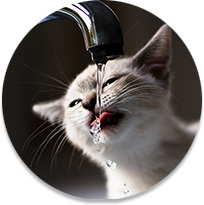 Maximum Contaminant Level (MCL): The highest level of a contaminant that is allowed in drinking water. Primary MCLs protect public health and are set as close to the PHGs (or MCLGs) as are economically and technologically feasible. Secondary MCLs (SMCLs) relate to the odor, taste, and appearance of drinking water.
Maximum Contaminant Level (MCL): The highest level of a contaminant that is allowed in drinking water. Primary MCLs protect public health and are set as close to the PHGs (or MCLGs) as are economically and technologically feasible. Secondary MCLs (SMCLs) relate to the odor, taste, and appearance of drinking water.
In Compliance: Does not exceed any applicable MCL, SMCL, or action level, as determined by DDW. For some compounds, compliance is determined by averaging the results for one source over a one-year period.
Regulatory Action Level (AL): The concentration of a contaminant which, if exceeded, triggers treatment or other required action by the water provider.
Maximum Contaminant Level Goal (MCLG): The level of a contaminant in drinking water below which there is no known or expected risk to health. MCLGs are set by the EPA.
Maximum Residual Disinfectant Level (MRDL): The highest level of a disinfectant allowed in drinking water. There is convincing evidence that addition of a disinfectant is necessary for control of microbial contaminants.
Maximum Residual Disinfectant Level Goal (MRDLG): The level of a drinking water disinfectant below which there is no known or expected risk to health. MRDLGs are set by the EPA and do not reflect the benefits of the use of disinfectants to control microbial contaminants.
Non-Detect (ND): The constituent was not detected.
Notification Level (NL) and Response Level (RL): Health-based advisory levels for unregulated contaminants in drinking water. They are used by DDW to provide guidance to drinking water systems.
Primary Drinking Water Standard (PDWS): MCLs and MRDLs for contaminants that affect health, along with their monitoring, reporting, and water treatment requirements.
Public Health Goal (PHG): The level of a contaminant in drinking water below which there is no known or expected risk to health. PHGs are set by the California Environmental Protection Agency's Office of Environmental Health Hazard Assessment without regard to cost or available detection and treatment technologies.
Treatment Technique (TT): A required process intended to reduce the level of a contaminant in drinking water.
Table Introduction
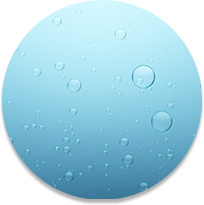 Cal Water tests your water for more than 140 regulated contaminants and dozens of unregulated contaminants. This table lists only those contaminants that were detected.
Cal Water tests your water for more than 140 regulated contaminants and dozens of unregulated contaminants. This table lists only those contaminants that were detected.
In the table, water quality test results are divided into four major sections: "Primary Drinking Water Standards," "Secondary Drinking Water Standards," "State-Regulated Contaminants with Notification Levels," and "Unregulated Compounds." Primary standards protect public health by limiting the levels of certain constituents in drinking water. Secondary standards are set for substances that don't impact health but could affect the water's taste, odor, or appearance. Some unregulated substances (hardness and sodium, for example) are included for your information. The State allows us to monitor for some contaminants less than once per year because the concentrations of these contaminants do not change frequently. Some of our data, though representative, are more than one year old.
Substance Sources
- DI: Byproduct of drinking water disinfection
- DS: Drinking water disinfectant added for treatment
- EN: Naturally present in the environment
- ER: Erosion of natural deposits
- FE: Human and animal waste
- FR: Runoff and leaching from fertilizer use; leaching from septic tanks and sewage
- IC: Internal corrosion of household plumbing systems
- IM: Discharge from industrial manufacturers
- IO: Substances that form ions when in water
- IW: Industrial waste
- OC: Runoff from orchards; glass and electronics production waste
- OD: Discharges of oil-drilling waste and from metal refineries
- PH: Inherent characteristic of water
- RU: Runoff/leaching from natural deposits
- SO: Soil runoff
- SW: Seawater influence
- WD: Leaching from wood preservatives
- UR: Unregulated constituents with no source listed and that do not have standardized "source of substance" language
Our testing equipment is so sensitive, it can detect mineral traces as small as 1 part per trillion. That is equivalent to 1 inch in over 15 million miles.
2020 Water Quality
Primary Drinking Water Standards |
||||||||
| Microbiological | Year Tested | Unit | MCL | PHG (MCLG) | In Compliance | Distribution System-Wide | Source | |
| Highest Monthly | ||||||||
| Total coliform | 2020 | Positive samples | 1 | (0) | Yes | 0 | EN | |
| Fecal coliform and E. coli | 2020 | Positive samples | 11 | (0) | Yes | 0 | FE | |
| Radiological | Year Tested | Unit | MCL | PHG (MCLG) | In Compliance | Groundwater | Source | |
| Range | Average | |||||||
| Gross alpha particle activity | 2012–2019 | pCi/L | 15 | (0) | Yes | ND–3.2 | ND | ER |
| Uranium | 2015–2020 | pCi/L | 20 | 0.43 (0) | Yes | ND–4.7 | 2.1 | ER |
| Inorganic Chemicals | Year Tested | Unit | MCL | PHG (MCLG) | In Compliance | Groundwater | Source | |
| Range | Average | |||||||
| Arsenic2 | 2018–2020 | ppb | 10 | 0.004 (0) | Yes | 2.6–7.2 | 4.3 | ER, OC |
| Barium | 2014–2020 | ppm | 1 | 2 (2) | Yes | ND–0.15 | ND | ER, OD |
| Nitrate as N | 2020 | ppm | 10 | 10 (10) | Yes | ND–3.0 | 1.4 | ER, FR |
| Lead and Copper | Year Tested | Unit | AL | PHG (MCLG) | In Compliance | Distribution System-Wide | Source | |
| 90th Percentile | Samples > AL | |||||||
| Copper | 2019 | ppm | 1.3 | 0.3 | Yes | 0.52 | 0 of 32 | IC, ER, WD |
| Lead | 2019 | ppb | 15 | 0.2 | Yes | ND | 0 of 32 | IC, IM, ER |
| Schools that requested lead sampling in 2020: 0 | ||||||||
| Disinfection Byproducts | Year Tested | Unit | MCL | PHG (MCLG) | In Compliance | Distribution System-Wide | Source | |
| Range | Highest Annual Average | |||||||
| Haloacetic acids | 2020 | ppb | 60 | N/A | Yes | ND | ND | DI |
| Total trihalomethanes | 2020 | ppb | 80 | N/A | Yes | ND–4.5 | 2.1 | DI |
| Disinfectants | Year Tested | Unit | MRDL | MRDLG | In Compliance | Distribution System-Wide | Source | |
| Range | Average | |||||||
| Free chlorine | 2020 | ppm | 4 | 4 | Yes | 0.20–1.1 | 0.62 | DS |
Secondary Drinking Water Standards |
||||||||
| Contaminants | Year Tested | Unit | SMCL | PHG (MCLG) | In Compliance | Groundwater | Source | |
| Range | Average | |||||||
| Chloride | 2018–2020 | ppm | 500 | N/A | Yes | 5.7–24 | 11 | RU, SW |
| Specific conductance | 2018–2020 | US | 1600 | N/A | Yes | 350–710 | 473 | SW, IO |
| Sulfate | 2018–2020 | ppm | 500 | N/A | Yes | 14–47 | 25 | RU, IW |
| Total dissolved solids | 2018–2020 | ppm | 1000 | N/A | Yes | 230–430 | 289 | RU |
| Turbidity (groundwater) | 2018–2020 | NTU | 5 | N/A | Yes | 0.11–0.92 | 0.45 | SO |
| Zinc | 2018–2020 | ppm | 5 | N/A | Yes | ND–0.05 | ND | RU, IW |
State Regulated Contaminants with Notification Levels |
||||||||
| Contaminants | Year Tested | Unit | NL | PHG (MCLG) | In Compliance | Groundwater | Source | |
| Range | Average | |||||||
| Chromium (hexavalent)3 | 2013–2014 | ppb | N/A | 0.02 | N/A | ND–3.4 | 1.3 | UR |
| Perfluorooctanoic acid (PFOA)4 | 2020 | ppt | 5.1 | N/A | Yes | ND–11 | ND | UR |
| Perfluorooctanesulfonic acid (PFOS)2 | 2020 | ppt | 6.5 | N/A | Yes | ND–68 | 5.4 | UR |
| Vanadium | 2018–2020 | ppb | 50 | N/A | Yes | ND–14 | 9.1 | UR |
Unregulated Compounds |
||||||||
| Constituents | Year Tested | Unit | MCL | PHG (MCLG) | In Compliance | Groundwater | Source | |
| Range | Average | |||||||
| Alkalinity (total) | 2018–2020 | ppm | N/A | N/A | N/A | 150–180 | 160 | UR |
| Calcium | 2018–2020 | ppm | N/A | N/A | N/A | 31–64 | 46 | UR |
| Hardness (total) | 2018–2020 | ppm | N/A | N/A | N/A | 170–180 | 175 | UR |
| Potassium | 2018–2020 | ppm | N/A | N/A | N/A | ND–2.2 | 1.0 | UR |
| Magnesium | 2018–2020 | ppm | N/A | N/A | N/A | 22–45 | 31 | UR |
| Sodium | 2018–2020 | ppm | N/A | N/A | N/A | 9.0–30 | 18 | UR |
| Perfluorobutanesulfonic acid (PFBS) | 2020 | ppt | N/A | N/A | N/A | ND–12 | ND | UR |
| Perfuoroheptanoic acid (PFHpA) | 2020 | ppt | N/A | N/A | N/A | ND–4.0 | ND | UR |
| Perfluorohexanoic acid (PFHxA) | 2020 | ppt | N/A | N/A | N/A | ND–6.0 | ND | UR |
| Perfluorhexanesulfonic acid (PFHxS) | 2020 | ppt | N/A | N/A | N/A | ND–24 | 4.2 | UR |
| pH | 2020 | STD U | N/A | N/A | N/A | 6.9–7.6 | 7.2 | PH |
1 This means one total coliform-positive routine sample and one repeat sample, with one of these also being E. coli-positive.
2 While your drinking water meets the federal and state standards for arsenic, it does contain low levels of arsenic. The arsenic standards balance the current understanding of arsenic's possible health effects against the costs of removing arsenic from drinking water. The EPA continues to research the health effects of low levels of arsenic, which is a mineral known to cause cancer in humans at high concentrations and is linked to other health effects, such as skin damage and circulatory problems.
3 The previous MCL of 0.010 mg/L (10 ppb) for hexavalent chromium was withdrawn on September 11, 2017, and there is currently no MCL in effect.
4 PFAS include both perfluorooctanic acid (PFOA) and perfluorooctanesulfonic acid (PFOS). There is no MCL or SMCL for PFOS/PFOA; however, there are established NLs and RLs. The NL for PFOA is 5.1 ppt and for PFOS is 6.5 ppt, with RLs of 10 ppt and 40 ppt, respectively. NLs are non-regulatory, health-based advisory levels established for constituents that may be candidates for MCLs in the future. Studies indicate that long-term exposure to PFOS/PFOA over certain levels could have adverse health effects; in laboratory studies, PFOS exposure resulted in immune suppression and cancer, while PFOA exposure resulted in increased liver weight and cancer. Cal Water proactively tested all of our active sources and immediately removed from service any sources that tested over the RL. We will be installing state-of-the-art PFAS removal treatment at one source in Marysville in 2021. We continue to work closely with DDW and EPA to conduct extensive monitoring.
Thank You
 Thanks for taking the time to learn more about your water quality! Even more information awaits you at www.calwater.com. Visit our web site to get information about your account, water-use history, water rates, and water system.
Thanks for taking the time to learn more about your water quality! Even more information awaits you at www.calwater.com. Visit our web site to get information about your account, water-use history, water rates, and water system.
You will also find water-saving tips and news about water conservation programs and rebates available in your area.






